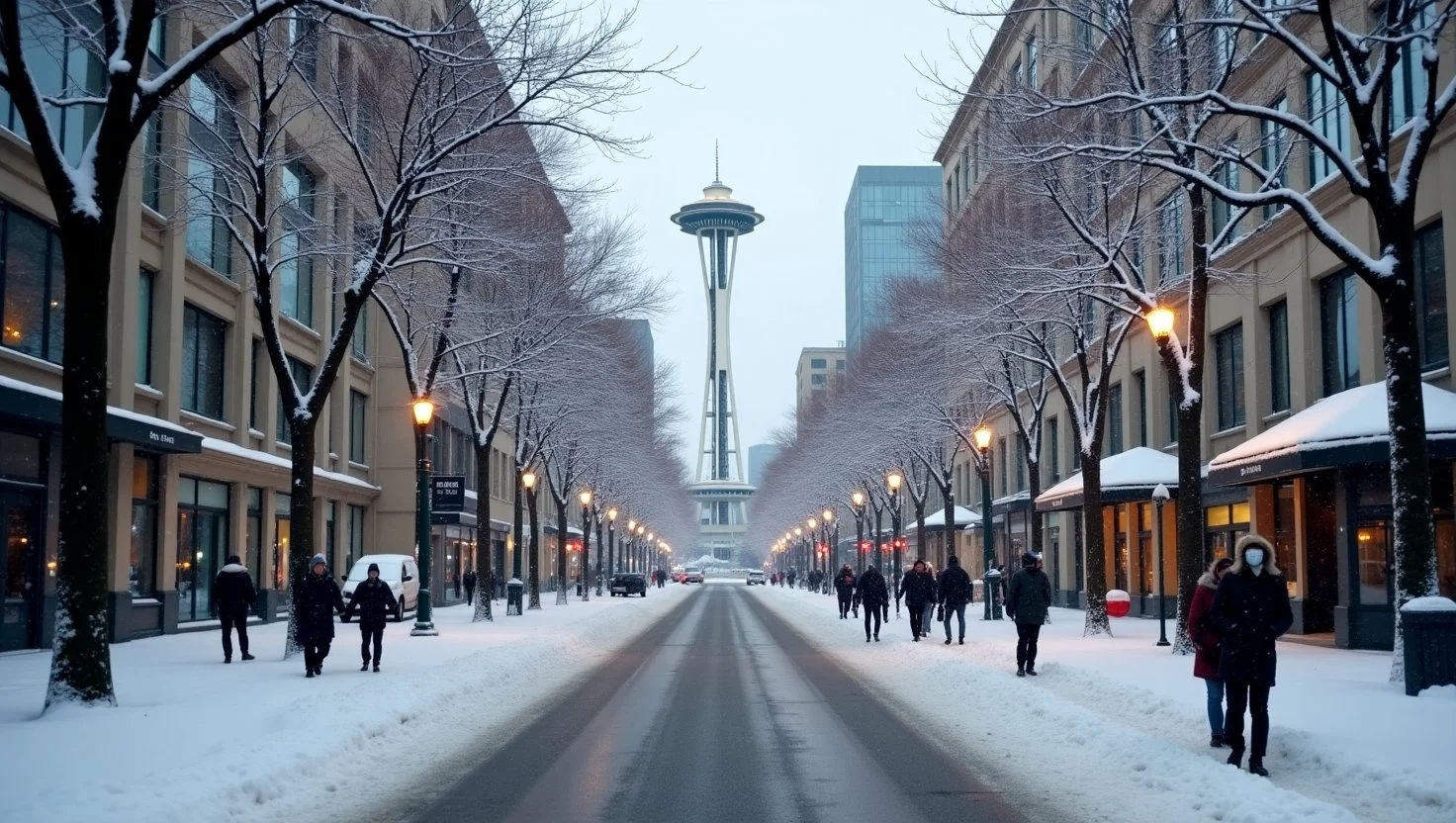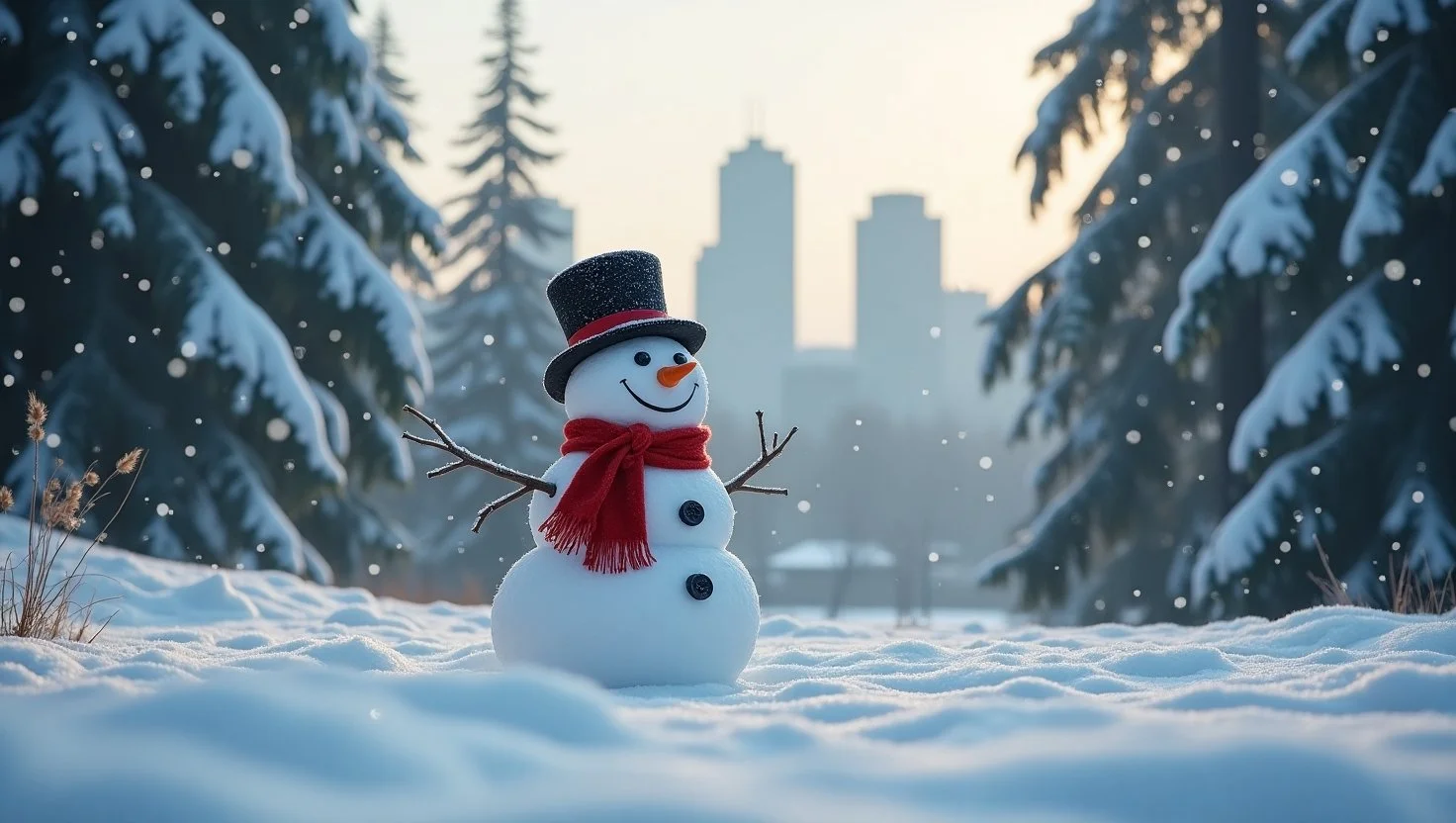Does It Ever Snow In Seattle?
/Although Seattle is known for its mild weather, light rain, and overcast skies, many people wonder if it ever gets snow. Seattle is not completely snow-free, despite the fact that it does not receive as much snow as other large cities in the northern United States. For the city, snowfall is typically a big event that brings excitement and chaos. From rare winter storms to little dustings, the relationship between snow and Seattle is unpredictable and a common topic of conversation among locals.
Also Check Out Our: Why Bill Gates Is So Successful?
Snow In Seattle Is Rare But It Can Still Happen During The Coldest Months Of The Year
Snowfall is still possible even though Seattle experiences warmer winters than places like Chicago or New York. Because the city's normal winter temperatures usually stay above freezing, most precipitation falls as rain instead of snow. However, in the right conditions, snowfall can occur in Seattle, especially between December and February.
One of the main reasons Seattle receives little snowfall is its closeness to the Pacific Ocean. Because of the ocean's capacity to control temperatures, the city stays quite warm even during the winter. However, when cold air from Canada pushes down into the region and mixes with moisture from the Pacific, snow can fall—sometimes in unexpected amounts.
When snow falls, only a few inches are enough to become a problem. A few inches are enough to cause mass closures, public transit disruptions, and shutting down the roads. Seattle isn't prepared to face the snowfall the same way other towns are, so when the snow finally comes, people are stuck at home or are unable to use the icy roads.
Significant snowstorms have occurred in Seattle in the past, albeit they are rare. As evidence of the profound effect that snow can have when it does fall, these storms have brought the city to a full standstill.
One of the most notable snowstorms in Seattle's history occurred in February 2019, when the city received almost 20 inches of snow in a few days. It was one of the worst storms in decades, closing schools and businesses and leaving many people trapped at home. Due to its mountainous terrain and lack of snow removal equipment compared to colder cities, even a small amount of snow can make driving on Seattle's roads nearly impossible.
In December 1996, there was another significant snowfall that dumped over a foot of snow on Seattle in one go. For weeks, the city struggled to recover after several roofs collapsed due to the weight of the snow. Although they may not occur frequently, these snowstorms serve as a reminder to everyone of how erratic Seattle's weather can be.
Also Check Out Our: What Is The Story Behind Bill Gates?
When Snow Falls In Seattle Many People Choose To Stay Home And Wait For It To Melt Instead Of Shoveling
People are accustomed to salting driveways, shoveling sidewalks, and driving cautiously on slippery roads in urban areas where snowfall is frequent. Things are different in Seattle. Many people just wait for the snow to melt rather than attempting to remove it because it does not remain for very long. Eliminating snow might be more of a pain than it is worth because of the steep hills and the absence of the right tools.
This might lead to a messy situation for homeowners. Wet flooring, sludge, and filth that can be challenging to clean are left behind when snow and slush are tracked inside. Because of this, a lot of people in Seattle depend on Cleaning Services to maintain their houses after snowy days. Having a dry and clean home can make the transition back to normal life much simpler when the weather eventually clears up. After Seattle's uncommon winter weather, a professional cleaning service may assist restore order, whether it's by vacuuming salt residue, wiping away melted snow, or simply refreshing the area after days of being cooped up inside.
Snow In Seattle Does Not Last Long Because Warmer Temperatures Quickly Melt It Away
Even when snow does fall in Seattle, it typically doesn't last long. Snowfall in Seattle usually disappears in a day or two, in contrast to colder locations where it accumulates for weeks or even months. This is due to the fact that after a snowstorm, the city's temperatures usually increase swiftly, melting the snow before it has a chance to build for an extended period of time.
Another issue that may result from this rapid melting is ice and slush. Roads and sidewalks may turn dangerously slick if snow melts throughout the day and then reforms overnight. It can be challenging for people to get about safely in these ice conditions since Seattle lacks as many snowplows and salt trucks as other cities. Instead of attempting to cope with the inconvenience of icy roads, many Seattle residents opt to wait until the streets naturally clear.
Some Parts Of The Seattle Area Get More Snow Than Others Depending On Their Elevation
Snow is also perceived differently in different regions around Seattle. Areas at greater elevation, the suburbs to the east, typically experience significantly more snow than the city, possibly only having a light dusting. Skiing and other winter pursuits are to be found in the area around the Snoqualmie Pass, just a few miles from Seattle and commonly having heavy snow in the winter.
Elevation has a dramatic impact even in the city. Neighborhoods at higher elevation, such as Queen Anne and Capitol Hill, typically experience a bit more snow than the flatter, waterfront neighborhoods. Snow in general, wherever you are, continues to be a rare and unreliable occurrence in Seattle.
Also Check Out Our: What Is Bill Gates Most Famous Invention?
Seattle Does Not Get Snow Often But When It Happens It Becomes A Big Event That Disrupts Daily Life
Because of its mild winters, Seattle rarely experiences snowfall, but when it does, it instantly becomes the talk of the town. Whether it's a light dusting that passes within a few hours or an occasional heavy snowstorm that shuts down the city, snow is always a big deal in Seattle.
Because the city is not as equipped to handle snowfall as other places, even little amounts can lead to road closures, delays in public transportation, and people choosing to stay indoors until the weather clears. Because of the city's high hills, lack of snow removal equipment, and sudden weather changes, residents in Seattle find snow events both exhilarating and stressful.







